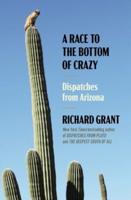Publisher's Synopsis
In the rich tapestry of American folklore, New England occupies a distinctive place. This region, with its unique blend of indigenous traditions, Puritanical influences, and immigrant contributions, has developed a robust cultural heritage. Clifton Johnson's What They Say in New England: A Book of Signs, Sayings, and Superstitions, first published in 1896, offers a compelling glimpse into this heritage. Johnson, a notable folklorist, photographer, and author, dedicated his career to documenting the vernacular traditions and oral histories of rural America. His work captures the essence of New England's folk culture at a time when industrialization and modernization threatened to erode these traditions.
Johnson's book is a comprehensive compilation of the superstitions, aphorisms, and proverbial wisdom prevalent in New England at the turn of the 20th century. Through meticulous fieldwork, he gathered a diverse array of sayings and beliefs from various communities, reflecting the region's multifaceted social fabric. The collection encompasses a broad spectrum of topics, including weather predictions, agricultural practices, health remedies, and moral aphorisms, all of which provide valuable insights into the daily lives and worldviews of New Englanders.
One of the book's most significant contributions is its preservation of oral traditions that might otherwise have been lost. As a folklorist, Johnson recognized the importance of capturing these ephemeral elements of culture, which often escape written records. His methodology involved direct engagement with informants, allowing him to record their sayings and superstitions in their authentic vernacular. This approach not only ensures the accuracy of his documentation but also imbues the text with a vivid sense of place and character.
Furthermore, What They Say in New England serves as a vital resource for understanding the interplay between folklore and regional identity. The sayings and superstitions cataloged by Johnson are not mere curiosities; they reveal the underlying values, fears, and aspirations of the communities from which they originate. For instance, many agricultural superstitions reflect a deep connection to the land and an intimate knowledge of natural cycles, while health-related sayings often highlight the resourcefulness and pragmatism of rural New Englanders.
In addition to its ethnographic value, Johnson's work offers a window into the dynamics of cultural continuity and change. The book captures a transitional period in New England's history, when traditional ways of life were increasingly challenged by new social and technological developments. By documenting these traditions, Johnson provides a baseline against which the evolution of regional folklore can be measured.
In conclusion, Clifton Johnson's collection is an indispensable text for scholars of American folklore, cultural history, and regional studies. Its detailed and authentic portrayal of New England's folk traditions offers a rich source of material for understanding the cultural and historical contexts that shaped the region. As both a record of the past and a testament to the enduring power of folklore, Johnson's work continues to resonate with readers and researchers alike, highlighting the timeless nature of human experience as reflected in the signs, sayings, and superstitions of a bygone era.








